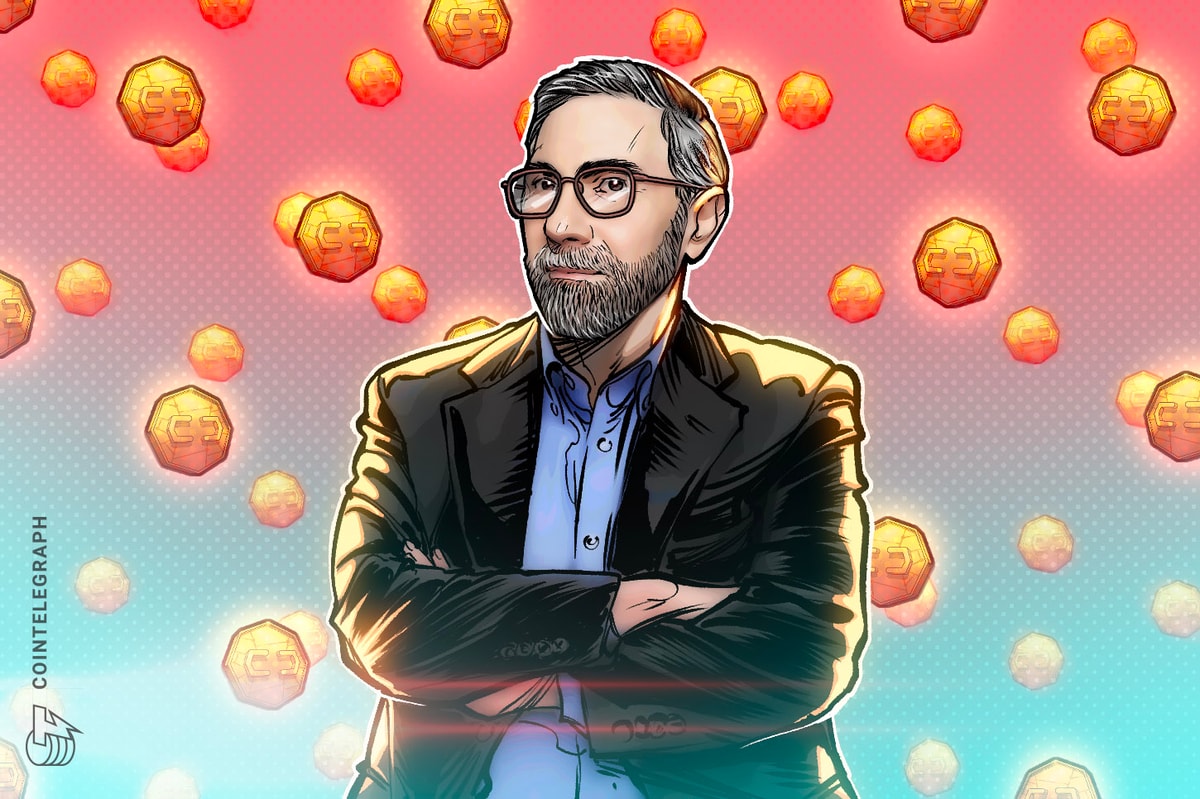Cryptocurrency has evolved over the last decade, but Krugman is still hung up on Bitcoin’s 2008 white paper.
Collect this article as NFT
In mid-November, as crypto markets reeled in the aftermath of FTX’s meltdown, Nobel Prize-winning economist Paul Krugman made use of his New York Times column to disparage crypto assets — again. Despite his unquestionable academic credentials, Krugman reiterated a common misunderstanding in his attempt to understand crypto assets — by conflating Bitcoin (BTC) with other cryptocurrencies.
Despite being the oldest, most valuable and most well-known member of this emerging class of digital assets, Bitcoin has a unique use case that differs widely from all others. Therefore, in order to understand this asset class as a whole, it would make more sense to choose as your starting point an asset with more tangible utility. Filecoin, for instance, provides storage for digital files in a similar vein to Google Drive or Dropbox, but in a decentralized manner. This network allows users with surplus storage to rent that capacity to other users in exchange for a fee. This fee is paid with the network’s native token, also called Filecoin. This example is far more representative of most crypto assets: a network that provides financial incentives for services in a decentralized manner, with added efficiency and reduced costs as a result of its lack of intermediaries and central counterparties. Bitcoin, however, is different.
But what exactly is Bitcoin? This seems to be another blind spot in Paul Krugman’s comprehension. Bitcoin has evolved over time, both in regards to its technology, with updates and improvements to its functionalities, and its most prominent investment thesis. Krugman, according to his own column, perceives Bitcoin (and, it goes without saying, other crypto assets) as a means of payment. That was, in fact, the intended purpose disclosed in the white paper that launched Bitcoin in 2008, remaining so in the years immediately following its publication.
Related: Crypto’s downturn is about more than the macro environment
However, this thesis has evolved over time. Most notably, in 2017, when a great debate arose within the Bitcoin community over whether to prioritize its functionality as a means of payment or its characteristics as a store of value. The will of the store of value proponents prevailed, and the dissidents created Bitcoin Cash. Since then, the predominant consensus is that Bitcoin should strive to be a substitute for gold, not fiduciary currencies — with the added benefits of greater portability and resistance to seizure.
In light of these characteristics, Bitcoin has become greatly sought after in extreme situations — such as the war in Ukraine and Venezuela’s hyperinflationary crisis — by ordinary people rather than criminals, as Krugman wrongly suggests. Evidently, Bitcoin has a long way to go before it effectively establishes itself as`a true store of value — the first step of which would be achieving greater price stability. Additionally, there are other use cases under development. The needed scalability improvements, which would allow it to flourish as a means of payment, have been assigned to the so-called layer-2 solutions, such as the Lightning Network. One of Bitcoin’s most recent updates implemented in September allowed for the creation of tokens within its network. Crypto has continued to evolve, but Krugman is still hung up on the 2008 white paper. The eventual failure of Bitcoin as a means of payment would not mean the end of Bitcoin itself, much less the end of all crypto assets.
Underpinned by this misunderstanding about the general nature of crypto assets and, in particular, of Bitcoin, Krugman arrives at conclusions that, despite being coherent within themselves, are completely mistaken, such as, for instance, his argument that the crypto industry would not survive increased levels of regulation. In 1998, when discussing a comparable topic, Krugman wrongly stated: “By 2005, it will become clear that the Internet’s impact on the economy has been no greater than the fax machine’s.” His bias against crypto assets may lead to predictions as inaccurate as his now-infamous quote about the future impact of the internet.
Related: From the NY Times to WaPo, the media is fawning over Bankman-Fried
Well-designed regulation for companies that provide services associated with crypto assets is welcomed by the vast majority of industry participants and is actually perceived as a development that would foster the confidence among investors needed to propel this technology toward mass adoption. Furthermore, many of the services offered by these companies are of a financial nature and, as the successive events that have occurred this year have shown us, contagion effects exist. This in itself justifies the need for greater regulation. Just as Krugman stated in the first line of his op-ed, “recent events have made clear the need to regulate crypto.” He was correct on that point.
It’s likely that the crisis created by FTX will spur regulators to expedite their efforts around the world and, consequently, help to consolidate crypto assets and blockchain technology. Just as Krugman’s misguided predictions haven’t meant the demise of his reputation, this crisis is not the end game for crypto.
This article is for general information purposes and is not intended to be and should not be taken as legal or investment advice. The views, thoughts and opinions expressed here are the author’s alone and do not necessarily reflect or represent the views and opinions of Cointelegraph.
Author
Administraroot

